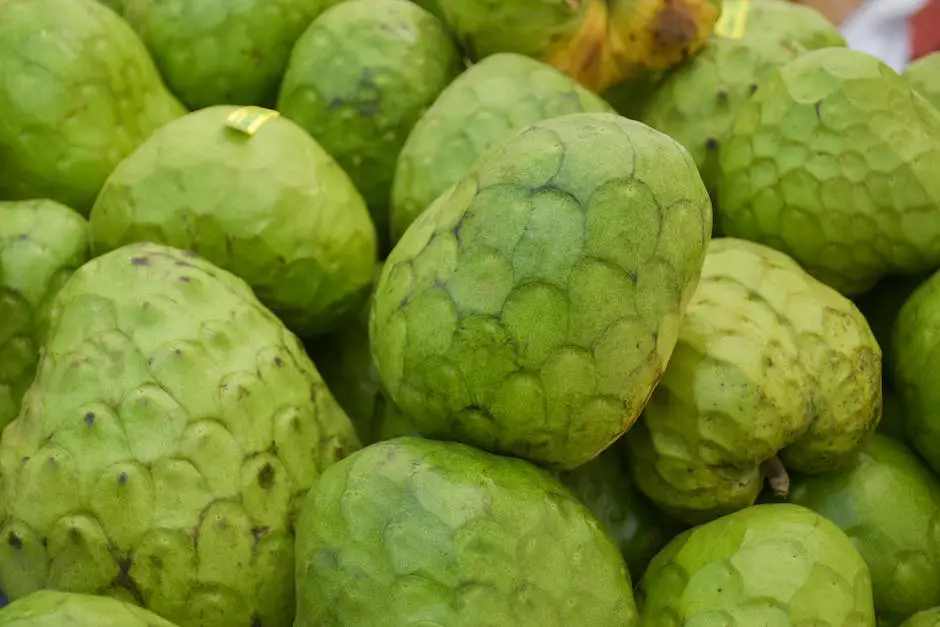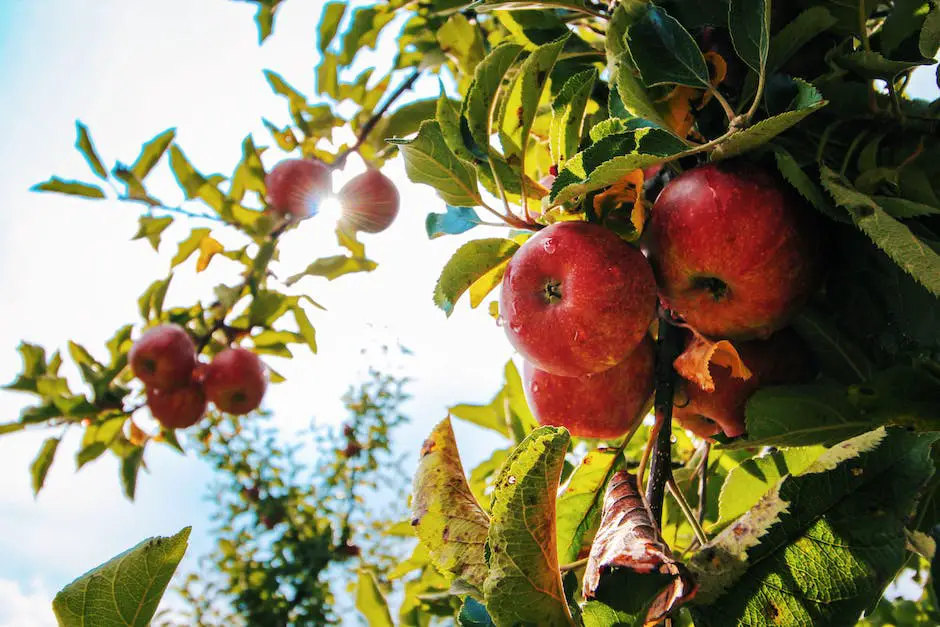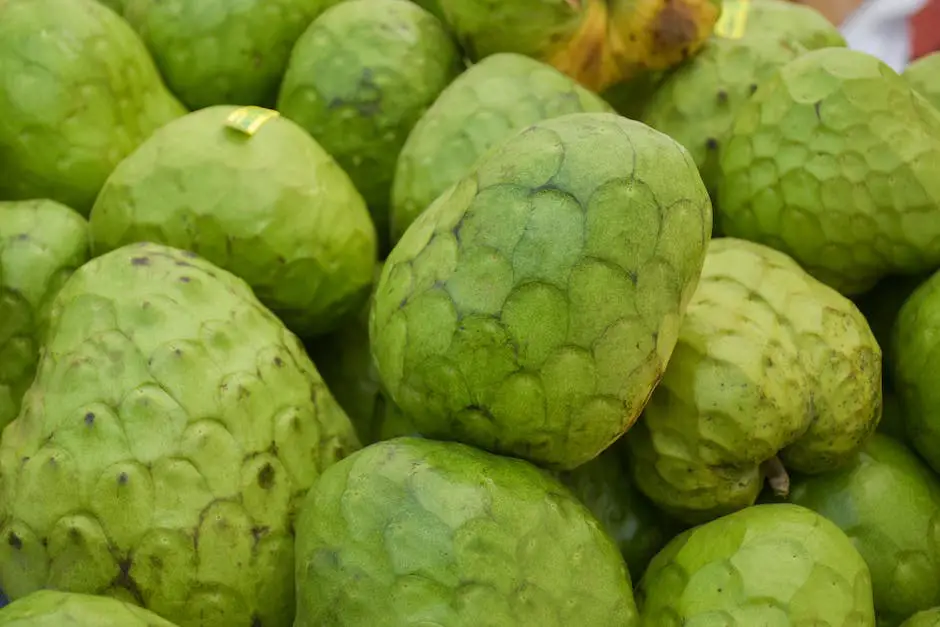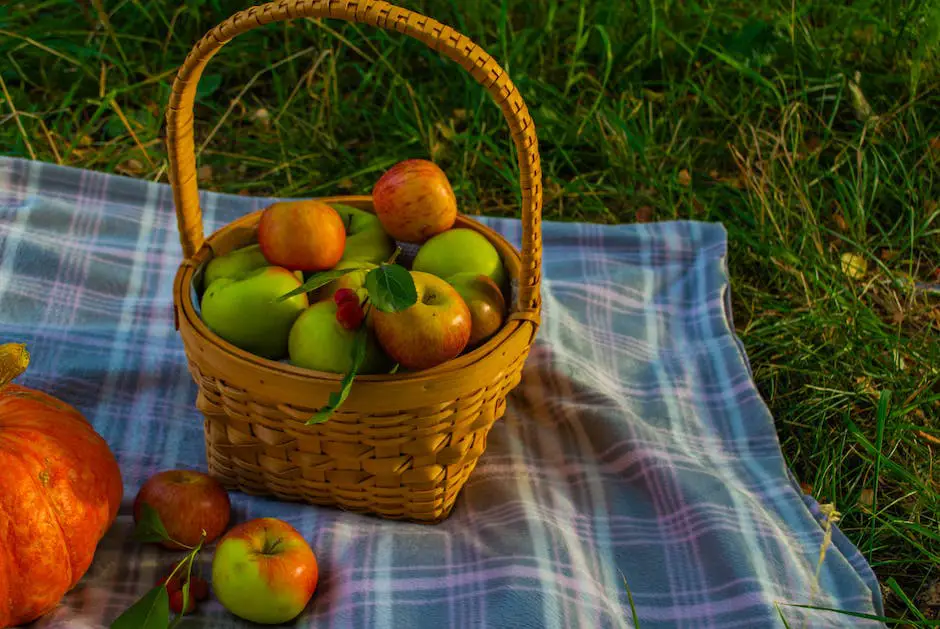Imagine biting into the sweet, creamy flesh of a custard apple, a fruit so intriguing that its unique taste and prolific health benefits are enjoyed and celebrated across the globe. At the heart of this admiration lies Jamaica, where the cultivation of custard apples seamlessly blends with the island’s vibrant culture and gastronomy. This discourse delves deep into the universe of the custard apple, shedding light on everything from its horticultural prominence in Jamaica to the pivotal role it plays in the local cuisine and tourism Sector.
Understanding the Custard Apple
The Custard Apple: A Delectable Tropical Treat
The custard apple is a tropical fruit indigenous to Central America, the Caribbean, and northern South America. Its physical characteristics are truly unique, as it is covered in a thin but tough rind that’s segmented with knobby appearing sections. The fruit’s interior houses black seeds enveloped within a creamy, custard-like flesh. Its texture and sweet flavor have led to its strikingly accurate name – custard apple.
Nutritional Content and Health Benefits
Beyond its delightful taste, the custard apple is lauded for its nutritional content. Packed with a host of essential nutrients, the fruit contributes significantly to overall health and wellness. It’s a good source of vitamin C, providing impressive antioxidants that aid the immune system. The fruit is rich in fiber, promoting gut health, and its magnesium content aids in maintaining heart health. The high potassium content also regulates blood pressure, while B-vitamins in the fruit are essential for nerve function.
In traditional medicine, different parts of the custard apple plant have been used to treat a variety of ailments, showcasing the fruit’s remarkable versatility. Furthermore, it’s renowned for its anti-cancer properties, believed to be due to the presence of compounds like acetogenin.
Custard Apple in Global Cuisine
Cultivated widely across the globe, the custard apple is highly valued in different cuisines. The cooked flesh can be made into pies and tarts or used as stuffing for poultry. In a simple preparation, the ripe fruit is chilled and eaten fresh, scooped straight from the rind. The fruit is also transformed into jam, jelly, and even wine in some cultures.
Custard Apples in Jamaica
The custard apple, also locally known as “sweetsop” or “sugar apple”, is a beloved part of Jamaica’s fruit selection. Its sweetly luscious, creamy texture has cemented its popularity among locals, both as a fresh treat or as a key component in various enticing and flavorful desserts. Not limited to just sweets, this versatile fruit also finds its place in assorted local cuisine and age-old medicinal traditions, showcasing Jamaica’s complete utilization of the custard apple for its taste and health attributes.
Capable of being spotted in abundance all over the island, custard apple trees decorate the Jamaican landscape, blooming beautifully from late winter throughout spring. By the time late summer rolls around, these trees bear fruit ready for harvest – a feast for the eyes at local markets and grocery stores, solidifying just how ingrained this tasty fruit is in the island’s culture.

Cultivation and Production of Custard Apple in Jamaica
Origins of the Custard Apple
Known by the scientific name Annona reticulata, custard apple trees are naturally found in the tropics. Jamaica, with its favorable tropical climate, offers a perfect home for the cultivation of this delicacy. Blessed with warm temperatures, nutrient-rich soils, and plenty of rainfall, the island nurtures these trees to their fullest potential. The lowland tropical parts of Jamaica, where temperatures vary from 25 to 40 degrees Celsius and where altitudes extend up to 1300 meters, are especially ideal for custard apple tree growth.
Cultivation of custard apple trees
The cultivation of custard apple trees involves several steps. The seeds are normally sown in nursery beds and allowed to grow into seedlings. When they reach a certain stage of growth, usually after 6-8 weeks, they are transplanted to a more suitable location.
Management and protection
Custard apples require careful management and regulated irrigation systems to prevent water-logging or soil erosion. Organic manure and fertilizers rich in nitrogen, phosphorus, and potassium are used to encourage robust leaf growth and high fruit yield. It’s also crucial to protect these trees from pests and diseases such as scale insects, fruit borers, and anthracnose fungi.
Flowering and harvesting
In Jamaica, custard apple trees come into flowering stage in early spring, and the fruits ripen from August to November. Since the fruit does not mature all at once, it requires a number of pickings. The ripe fruits are delicate and require careful handling to avoid damage.
Contribution to Jamaica’s agricultural sector
Custard apple production contributes significantly to Jamaica’s agricultural sector. Custard apples are not only consumed domestically, they also have a high export potential. The fruits are used to make juices, jellies, and desserts, and the tree is sometimes grown for its ornamental value as well.
Impact on local families
The cultivation of custard apples also plays a huge role in improving the livelihoods of many local families in Jamaica. The business of organically grown custard apples, in particular, is a major source of income for small to medium-sized farmers in the country.
Nutritional Advantages
The flavorful custard apple, much beloved in Jamaica, is packed with a variety of nutritional benefits. Notably, it is an excellent source of vital nutrients like vitamin C, dietary fiber, magnesium, and potassium. This makes them a fine choice for a healthy snack. Owing to their unique sweet taste and health benefits, custard apples have a consistent demand throughout the year in Jamaica.

Culinary Uses of Custard Apple in Jamaica
Custard Apple: A Highlight in Jamaican Cuisine
The custard apple, diversely known as the ‘sugar apple’ or ‘sweetsop’, is a delectably soft, sweet, and creamy fruit indigenous to the Caribbean and Central America. Its distinctive flavor has inevitably made it a sought-after ingredient in Jamaica’s culinary landscape, significantly enriching the country’s traditional dishes and gastronomy culture.
Apart from its sweet, custard-like texture that justifies its name ‘custard apple’, this tropical delight is brimming with several nutrients, which include vitamin C, essential dietary fibers, and vital minerals. When ripe, the custard apple’s tender exterior can be effortlessly opened to reveal an opulent, cream-colored pulp that covers dark seeds.
Employment in Traditional Jamaican Dishes
Custard apple is used in a variety of forms in Jamaican cuisine – both cooked and raw. It’s often enjoyed fresh, with the pulp scooped out and consumed directly or used in fruit salads. Despite its sweetness, it offers a refreshing taste, especially when chilled, making it a perfect fruit to be enjoyed during any time of the day. The pulp can be used to make a tantalizingly creamy custard apple ice cream, a crowd favorite in Jamaica.
The fruit’s mellow sweetness also blends well with other tropical flavors, and it is frequently used to make savory-sweet salsas. For instance, custard apple salsa with pineapple, cilantro, and a hint of chili pepper adds a spicy, fruity twist to grilled fish or chicken dishes. Custard apple is additionally used to make a variety of desserts, from traditional Jamaican pudding and cakes to modern reinterpretations like custard apple cheesecake or crème brûlée.
Jamaican Custard Apple Drinks and Smoothies
Being high in water content, the custard apple is a popular ingredient for creating refreshing beverages. In Jamaica, a traditional drink called ‘custard apple punch’ is made by blending custard apple pulp with milk, sweet spices, and rum. This creamy and intoxicating concoction is a staple in many Jamaican households, especially during the hot summer months.
Moreover, custard apple smoothies are a healthier, non-alcoholic alternative. The pulpy fruit, when combined with ingredients like coconut milk, yogurt, and a touch of honey, results in a nutritious and energy-boosting drink. It’s a popular choice for breakfast or as a mid-day snack in Jamaica.
The Versatility of Custard Apple in Contemporary Jamaican Cuisine
Contemporary Jamaican food culture has skillfully harnessed the culinary virtues of the custard apple. Equipped with a multifaceted flavor and a custard-like consistency, this fruit has been creatively used in a myriad of contemporary dishes and sweet courses. Whether it’s the fusion of custard apple in zesty sauces or its use in creative dessert artistry, both professional chefs and home cooks in Jamaica take delight in culinary innovations using this exotic fruit.

Custard Apple Tourism in Jamaica
Action-packed Custard Apple Ecotourism in Jamaica
Jamaica, celebrated globally for its breathtaking shorelines, top-notch hospitality, and dynamic music scene, also boasts another notable attraction – the delicious custard apple. With a distinct flavor and a unique texture, custard apple ecotourism is increasingly becoming a hit with travelers seeking a genuine taste of Jamaica’s rich heritage of tropical fruits.
The tropical weather conditions in Jamaica create the perfect environment for the growth of custard apple trees. The fruit, characterized by its slightly heart-shaped form and craggy skin that encases the creamy, sweet flesh, mesmerizes with its unique taste. It has been described as a tropical fruit medley, calling to mind flavors of bananas, coconuts, and pineapples. Its distinct flavor and unique texture make it a beloved choice among both locals and tourists.
Picking Custard Apples Straight from the Tree
One of the highlights of custard apple tourism is the chance for tourists to pick the fruit directly from the tree. Many fruit farms and orchards in Jamaica offer custard apple picking tours that allow visitors to enjoy the experience of fruit harvesting firsthand. This not only lets them appreciate the natural abundance of Jamaica but also provides them with an activity that is both fun and educational.
Custard Apple at Local Markets
Moreover, Jamaica’s local markets are vibrant and bustling, offering a multitude of fresh produce, including the custard apple. Visiting a local market allows tourists to immerse in the local culture and get a taste of the island’s gastronomy. Buying custard apples and other seasonal fruits from these markets encourages support for the local farming community while simultaneously offering a delightful and nutritious treat.
Indulgence in Jamaican Resorts
Even Jamaican resorts have joined in promoting custard apple tourism by offering dishes and beverages made from this delightful fruit. Whether it’s a freshly made custard apple juice served by the beach or a rich custard apple dessert enjoyed after dinner, these menu selections have become a luxurious enjoyment for visitors. Incorporating custard apple in their menus allows these resorts to give guests a taste of the local splendor and promote awareness and appreciation for Jamaica’s horticultural bounty.
Ecotourism and Custard Apple Farms
Custard apple tourism in Jamaica also falls under the larger umbrella of ecotourism, a growing sector that aims to be environmentally responsible and sustainable. By visiting custard apple orchards and farms, tourists contribute to the local economy while promoting ecological sustainability. This sustainable tourism model ensures Jamaica’s natural resources, including delicious fruits like the custard apple, continue to be enjoyed by future generations.
In conclusion, custard apple tourism is an integral part of experiencing Jamaica’s rich fruit heritage. From picking the fruit right off the tree, tasting it in vibrant local markets, to savoring it as a part of a luxury resort menu, custard apple becomes more than just a fruit – it’s a cultural experience symbolic of Jamaica.

Thus, from the sunlit orchards where custard apples thrive, to the bustling markets selling these nourishing fruits, to the elegant dining spaces where they’re transformed into appetizing dishes, Jamaica is a testament to the custard apple’s undeniable charm. As an integral part of the Jamaican landscape, the custard apple not only bolsters the country’s economy but also sweetens the experience for its global visitors. All in all, the custard apple, much like Jamaica, is a vibrant celebration of tradition, gastronomy, and nature’s bounty.
